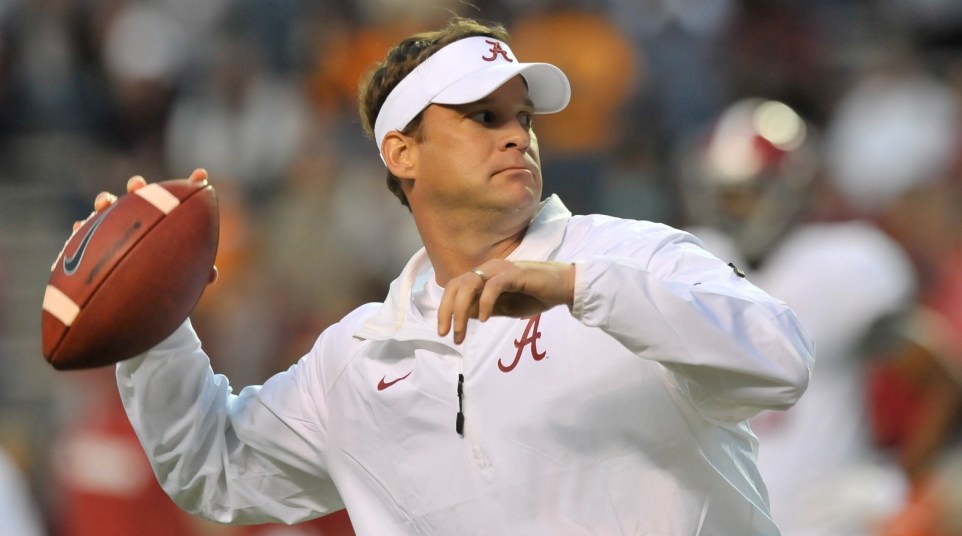How will the Alabama offense evolve without Amari?
When Alabama takes the field for the A-Day game on April 18, the offense is going to have a different look to it. Offensive coordinator Lane Kiffin will be working with a different cast of characters, as Alabama replaces nine offensive starters. The biggest loss, of course, is offensive hub Amari Cooper, who rewrote Alabama’s record books with Kiffin last season.
Does that mean we’re in for major changes in Kiffin’s second year at the helm? On the surface, it has to. Gone is a unique talent, a receiver capable of doing everything for the offense that Kiffin took full advantage of.
Kiffin’s history suggests that change is possible, but also that at least one Alabama receiver could be primed for a big season. At Tennessee, Kiffin had a future NFL receiver in Denarius Moore, but the ball was still spread around a good bit; Moore was second on the team in receptions, while the Vols’ tight end and running back (another future NFLer, Monterrio Hardesty) also were heavily involved in the passing game.
And at Southern California, despite some monster years, Kiffin’s passing offenses were more balanced than last year’s Alabama team. Robert Woods and Marqise Lee each had a 100-catch season under Kiffin, with Woods reaching that mark in 2011 and Lee in 2012. Lee pulled in more than 70 catches in 2011, and Woods did the same in 2012. In Kiffin’s other two years (one cut short by his firing), the Trojans’ two leading receivers were basically even in catches and very close in yardage.
Unless one of Alabama’s many talented receivers — Chris Black, Raheem Falkins, Robert Foster, Cam Sims, Calvin Ridley — separates himself in spring and fall workouts, it’s near impossible to imagine one Alabama receiver getting three times the targets as the next closest player, as Cooper did in 2014.
And what about the backfield? Alabama still ran the ball plenty in 2014, thanks to a record number number of plays the offense ran, but didn’t do so quite as effectively as in years past. Kiffin has been willing to use the running game in his past, with two runners topping 700 yards in three of his four Southern Cal years and Hardesty averaging 21.7 carries per game in Kiffin’s year at Tennessee.
For the second straight year, Kiffin will have the most backfield talent he’s ever worked with. Derrick Henry should be ready for prime time after two years of sharing carries, while Kenyan Drake is ready to return from injury. Everyone has seen what Henry can do when given the opportunity, but Drake’s comeback could be even more vital for the Tide offense.
Drake has the skills to be a big-time receiver out of the backfield, and his presence on routes around the line of scrimmage could help cushion the blow of losing Cooper’s dominance on wide receiver screens and quick slants. Despite playing in just five games, Drake still was seventh on Alabama in receiving yards, thanks to an ability to turn those short passes into big plays.
Whoever ends up starting at quarterback, be it Jacob Coker or David Cornwell or true freshman Blake Barnett, Alabama will still have an explosive offense. But will the offense look the same as it did in 2014? The simple answer: it can’t look the same.
Still, there’s too much talent for a major drop off, despite some rawness and inexperience, to imagine otherwise, especially with such a talented coach calling the plays.

